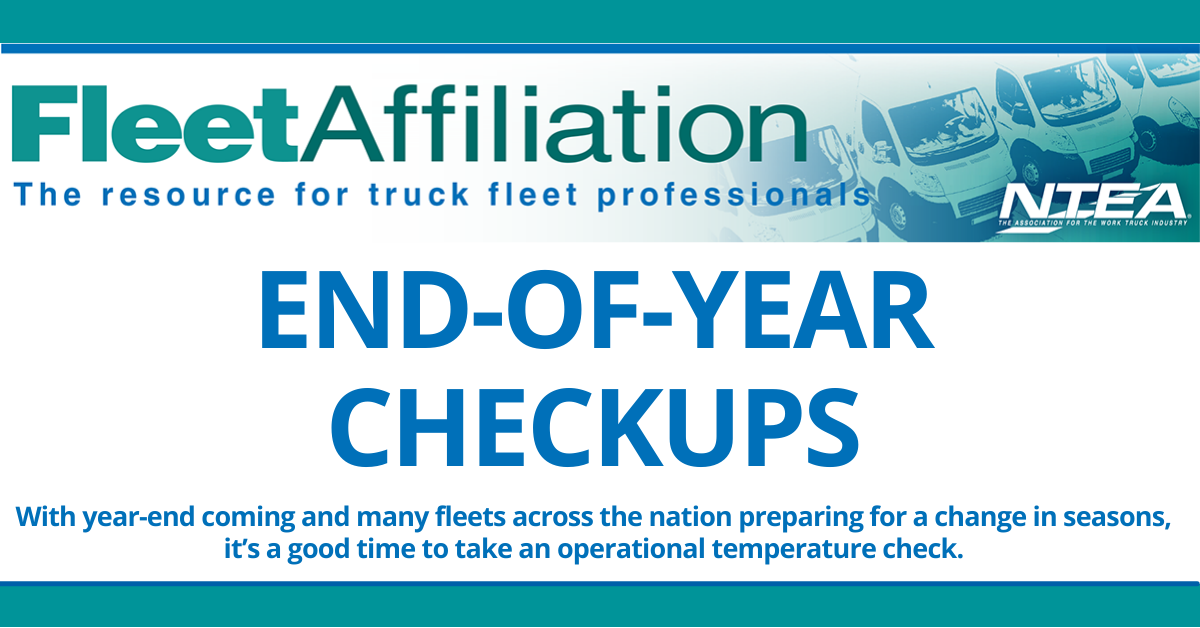 Published in December 2021 Fleet Affiliation.
Published in December 2021 Fleet Affiliation.
With year-end coming and many fleets across the nation preparing for a change in seasons, it’s a good time to take an operational temperature check. Much like an annual physical for a person, it’s important to make sure your fleet's needs are being met. Many fleets have had to defer purchases within the last year simply based on supply chain disruptions. With any operation, it’s imperative to look at procedures and ensure they are working optimally within your organization.
Often, operations take the stand that if it’s not broken, don’t fix it. Preventative maintenance often falls within that category. As times have changed within the past two years, procedures may need to be adjusted as well. A concrete preventative maintenance program tailored to current fleet operations reduces downtime and keeps repair costs to a minimum. Poorly defined preventative maintenance programs and policies are expensive in terms of time allocation and money. Periodically reviewing and optimizing preventative maintenance programs can reduce costs and increase a fleet’s efficiency.
Data – we talk about it a lot and it shows
Fleets can have all the information and data in the world, but it can be as valuable as an old paperweight if it is left sitting idle. Spending time to examine the data and information can steer preventative maintenance programs into the limelight. Your information has most likely changed with current market conditions as we enter times of uncertainty and uncharted waters. With no fault to operational procedures, it is important to understand the red flags your data may be showing you that may not have been historically present. This should begin with unscheduled maintenance that was performed between scheduled maintenance intervals. This allows you to identify trends and adjustments to maintenance programs. With more fleets increasing in age, at least temporarily, this should be a change of focus.
Changing of the season and environments
For many of us, snow season is upon us; this means a shift in operating environments. Many fleets will be switching to snow removal season. One of the most important factors, and part of a preventative maintenance program, is weight. Although from a fleet operator’s point of view there may be little control when it comes to overloading, some driver and operator training can be a useful tactic. As a fleet professional, you should be very concerned with how your trucks are loaded. First and foremost, an overloaded truck is in violation of numerous state and federal regulations and is unsafe to operate. In addition, an overloaded truck is costly to maintain and operate. With the current climate of chassis availability and even the availability of certain repair components, fleets cannot afford unnecessary breakdowns. For fleets that were successful in getting some vehicles replaced, it is important to remember that just because trucks are similar does not make them equal. Specific to snow plowing vehicles, four-wheel drive vehicles do not necessarily mean it is a snowplow-capable vehicle. As one example, electrical systems on vehicles are very complex and many of the functions have shifted to electric modules. Weight is also an issue; ballasting may be required, among other adjustments.
Bringing it all together
While there is some light nearing the end of the tunnel to getting back to normal, we still have to make do with the tools we have. Ensuring proper maintenance and adjusting operations is the first step. Second is ensuring equipment is being properly used and utilized. This will contribute to maximum uptime and efficient operations.
Looking for more fleet insight? Register for Work Truck Week 2022 today. View opportunities and education for fleets.
